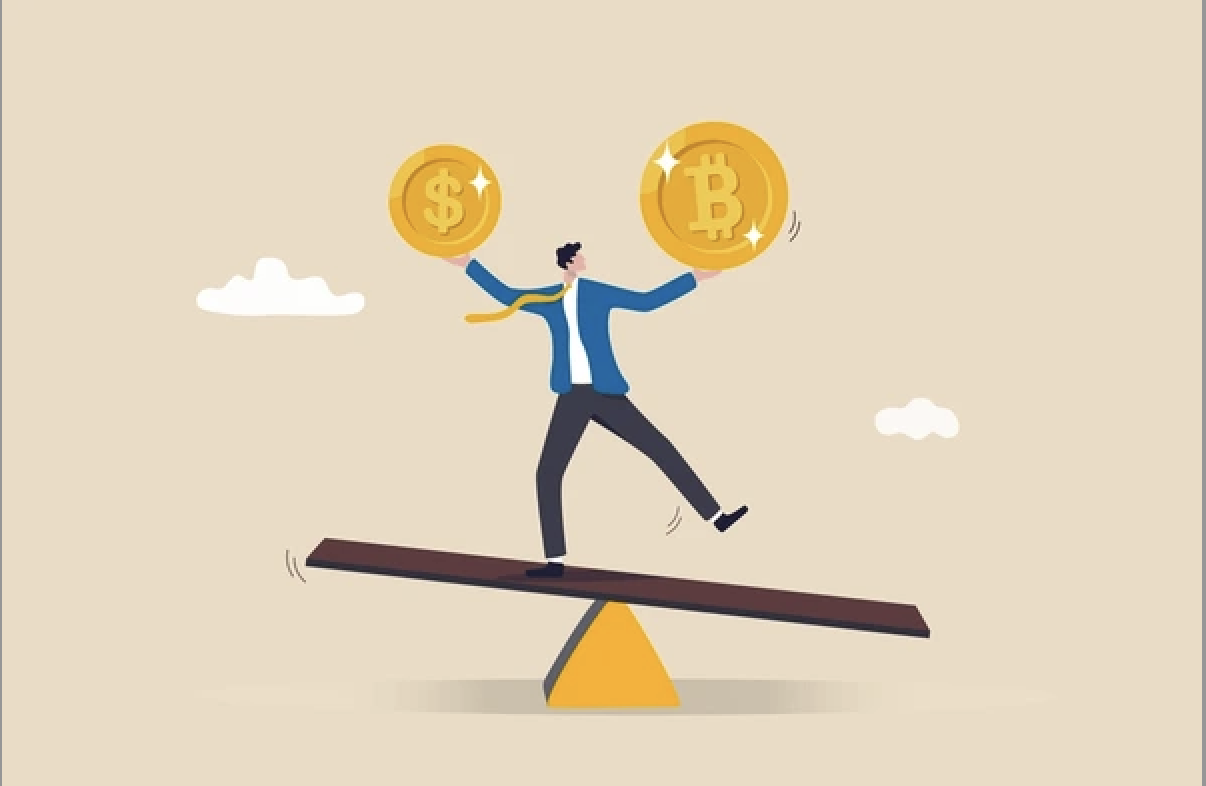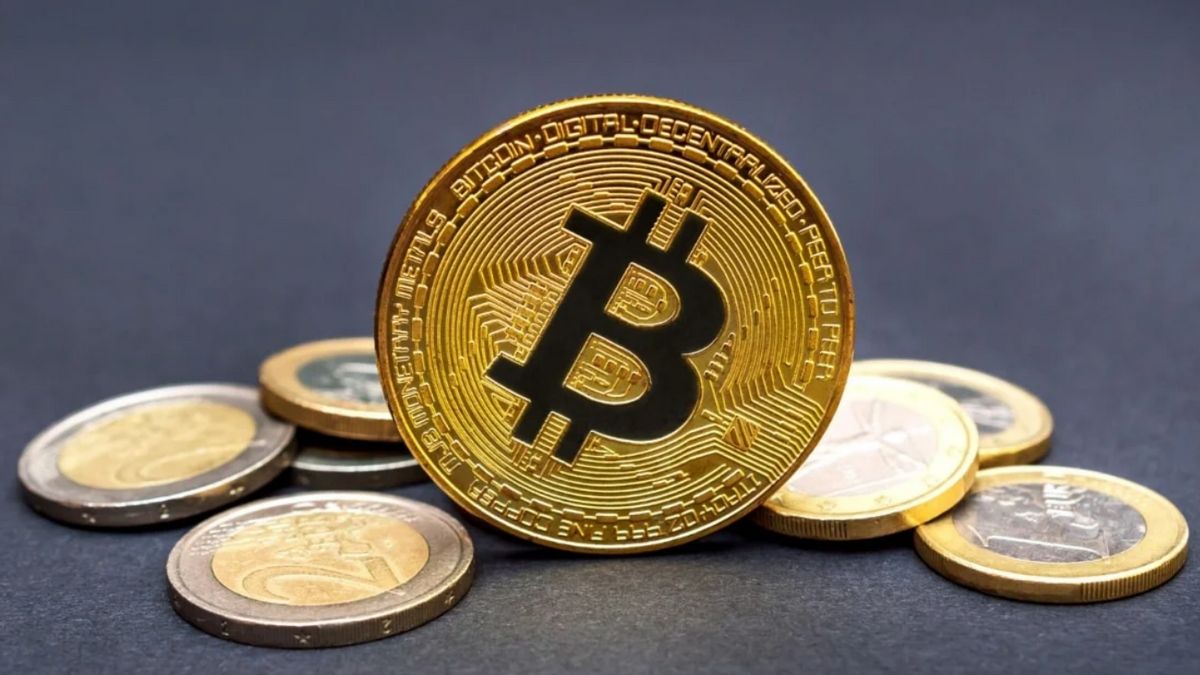Introduction: Bitcoin's Swings and the World of Futures
Bitcoin (BTC), the pioneer of cryptocurrencies, constantly captures global investor attention with its price volatility. From mere cents to tens of thousands of dollars, BTC's value growth has been astonishing. However, beyond simply holding Bitcoin (spot trading), there's a more strategic and potentially high-reward trading method: BTC futures, also known as Bitcoin contract trading.
BTC futures allow traders to speculate on future price movements without actually owning Bitcoin, leveraging leverageto amplify potential gains. But high rewards always come with high risks. For those looking to delve into this area, understanding its mechanisms, risk management, and trading strategies is crucial. This article will thoroughly explain BTC futures, helping you embark on your contract trading journey with confidence.
I. What are BTC Futures? The Basics and Types of Bitcoin Contracts
BTC futures are, put simply, financial derivative contracts that stipulate an agreement to buy or sell Bitcoin at a predetermined price on a future date. In the crypto market, perpetual futures are the most common; they have no expiration date and can be held indefinitely, significantly increasing trading flexibility.
-
Core Definitions: They allow traders to buy and sell based on expectations of Bitcoin's future price, without actually owning the underlying BTC. You are trading a promise, not the physical asset.
-
Main Contract Types:
-
Perpetual Futures: This is the most popular type of Bitcoin contract trading because it has no expiration date. You can hold positions indefinitely, without worrying about contract delivery. To keep the perpetual contract price close to the spot price, exchanges use a funding rate mechanism. Funding rates are settled every few hours (typically 8 hours); if the perpetual contract price is higher than spot, long positions pay a fee to shorts; conversely, shorts pay longs. This is a significant implicit cost or revenue.
-
Delivery Futures: These contracts have a fixed expiration date, at which point they are automatically delivered (closed). Traders must close their positions before the expiration date or await delivery.
-
-
Margin Types:
-
USDT-Margined Contracts (USDT-M): This is the most common and beginner-friendly type. You use USDT (Tether, a stablecoin) as collateral, and all profits and losses are also settled in USDT. This means your profits are in a stablecoin of fixed value, unaffected by BTC price fluctuations.
-
Coin-Margined Contracts (COIN-M): These contracts use BTC itself as collateral, and profits and losses are settled in BTC. They are more suitable for investors who hold large amounts of BTC long-term and wish to hedge against potential BTC price drops through futures trading.
-
-
Leverage: At the heart of BTC futures is leverage. It allows you to control a contract position worth far more than your initial capital (margin). For example, with 10x leverage, you can control 10,000 USDT worth of BTC contracts with just 1,000 USDT in margin. This amplifies your potential profits, but equally, it accelerates your potential losses.
-
Two-Way Trading: BTC futures allow you to go long (buy) and go short (sell).
-
Long: You buy a BTC futures contract when you anticipate the BTC price will rise.
-
Short: You sell a BTC futures contract when you anticipate the BTC price will fall.
-
II. The Allure of BTC Futures: Why It Attracts Countless Traders
The appeal of BTC futures lies in its unique advantages, making it a preferred choice for many advanced traders.
1.High Leverage Effect: Amplify Gains from Small Capital
-
This is the most prominent feature of BTC futures. With leverage ranging from tens to even hundreds of times, traders can control significant market value with relatively small capital. This means that even minor fluctuations in Bitcoin's price can lead to exponential gains in your account, achieving incredible capital efficiency.
-
Example: With 20x leverage, a 5% increase in BTC's price could double your principal.
2.Two-Way Trading Mechanism: Profit in Both Bull and Bear Markets
-
Unlike spot trading, which primarily profits from price increases, BTC futures allow you to go long (predict upward movement) and go short (predict downward movement). Regardless of whether the market is in a bull or bear phase, as long as you predict the direction correctly, you can profit from price fluctuations. This significantly increases trading flexibility and potential profit opportunities.
3.Flexible Risk Hedging Tool: Protecting Your Spot Assets
-
For investors holding a substantial amount of BTC in spot positions, BTC futures serve as a perfect hedging tool. When you anticipate a short-term drop in Bitcoin's price, you can short an equivalent amount of BTC contracts in the futures market to offset potential losses in your spot assets. This way, even if the spot price falls, the profits from your futures short position can compensate for part of the loss, protecting your overall asset value.
4.High Capital Efficiency: Lower Entry Barrier, Greater Control
-
Compared to directly buying and holding an equivalent value of BTC in spot, BTC futures trading requires significantly less initial capital (margin). This means you can participate in Bitcoin's trading with a smaller investment and control a larger position, utilizing your capital more efficiently.
5.High Liquidity: Quick Entry and Exit
-
In major cryptocurrency exchanges, the BTC futures market typically boasts extremely high liquidity. This means there's ample order book depth, allowing you to open and close positions quickly with minimal or no slippage. This is crucial for traders prioritizing efficiency.

III. The Other Side of BTC Futures: Hidden Pitfalls and Significant Risks
While BTC futures offer immense potential, their risks should not be underestimated; in fact, they far exceed those of spot trading. A single misstep could lead to substantial losses.
1.Forced Liquidation (Margin Call): The Nightmare of Zero Capital
-
This is the most lethal risk of BTC futures. When the market price moves significantly against your position, causing your margin account equity to fall below the maintenance margin requirement, the exchange will automatically force-liquidate your position to manage its own risk. Once liquidated, all the margin you put into that position will be completely lost. Due to Bitcoin's high volatility, in extreme market conditions, liquidation can happen in an instant, leaving you with almost no time to react.
-
Core Mechanism: Your position value fluctuates, and the maintenance margin is a dynamic line. Once losses erode most of your margin and touch this line, liquidation will be triggered.
2.Implicit Cost of Funding Rates: Eroding Your Profits
-
Although perpetual contracts have no expiration date, to anchor them to the spot price, funding rates are an unavoidable cost or revenue. In markets with consistent long-term trends (e.g., a prolonged bull market where long positions significantly outweigh shorts), as a long position holder, you might have to pay funding fees to short position holders over time. These seemingly minor fees can accumulate substantially over the long term, potentially eroding your profits and even turning a profitable position into a loss.
3.Extreme Market Volatility: Amplifying Leveraged Risk
-
Bitcoin itself is known for its dramatic price volatility. Daily price swings of 10% or even 20% are not uncommon. When leverage is applied, this volatility is magnified dozens of times. Even a small "wick" (a brief price spike to an extreme point followed by a rapid rebound) can instantly trigger your liquidation line under very high leverage.
4.Slippage and Liquidity Risk: Unexpected Losses
-
In highly volatile markets, during periods of insufficient liquidity, or when executing large market orders, there might be a discrepancy between your desired order price and the actual execution price. This is slippage. It means your stop-loss order might not be triggered at the intended price, or a market order might execute at a far less favorable price than expected, leading to losses beyond your initial projections.
5.Immense Psychological Challenge: The Battle of Greed vs. Fear
-
The fast pace and high volatility of BTC futures trading pose a significant psychological challenge to traders. Faced with rapidly changing profits and losses, traders can easily be swayed by emotions like greed (wanting more, not taking profits) and fear (worrying about losses, blindly cutting positions), leading to irrational decisions and ultimately unnecessary losses. FOMO (Fear Of Missing Out) and FUD (Fear, Uncertainty, and Doubt) are particularly common in the Web3 contract market.

(Source: istock)
IV. How to Strike Gold in the BTC Futures Market: Core Trading Strategies and Safety Guidelines
Given that BTC futures hold both enticing "goldmine" potential and hidden "minefields," the key to success lies in effective risk management and applying correct strategies.
1.Risk Management is Your Lifeline:
-
Strict Stop-Loss, Without Delay: For any BTC futures trade, you must set a stop-loss level before opening the position. A stop-loss limits the maximum loss you can incur on a single trade. This is the last line of defense for your capital and the "lifeline" of Bitcoin contract trading. If the price hits your stop-loss, close the position immediately to prevent further losses.
-
Sensible Position Sizing: Never over-leverage or use your full capital. The margin you commit to each trade should only be a small percentage of your total trading capital (generally recommended between 1% and 5%). Even if a single trade results in a loss, it won't severely impact your principal. This is the core of scientific cryptocurrency capital management strategies.
-
Choose Appropriate Leverage: For beginners, it's strongly advised to start with low leverage (3x-5x or even lower). High leverage is a tool for professional traders and is not suitable for novices. Only consider gradually adjusting as you gain experience.
2.Develop a Clear Trading Plan:
-
Entry/Exit Conditions: Before opening a trade, clearly define why you are entering this trade? What signals are you basing your entry on? Where is your profit target? Where is your stop-loss?
-
Analysis Basis: Are your decisions based on technical analysis (e.g., candlestick patterns, moving averages, MACD, RSI, etc., to identify trends and potential support/resistance levels) or fundamental analysis (e.g., Bitcoin halving events, major regulatory policies, macroeconomic data, Web3 project developments, which can significantly impact the market).
-
Market Sentiment Assessment: Remain sensitive to market sentiment, but avoid being swayed by emotions. Think independently, don't blindly chase pumps or dump.
3.Strict Capital Management Discipline:
-
Use Only Disposable Income: The funds you allocate to BTC futures must be disposable income that, if entirely lost, would not affect your daily life or financial well-being. Absolutely avoid borrowing money or using essential living expenses for trading.
-
Regularly Withdraw Profits: When your account becomes profitable, regularly withdraw a portion of the profits to a secure location (like a spot account or cold wallet) to lock in gains and prevent profit erosion.
-
Diversify Investments: If you have a larger capital base, consider diversifying your funds across different asset types or risk levels to mitigate single-point risk.
4.Cultivate Psychological Resilience: Overcoming Human Weaknesses
-
Avoid Emotional Trading: Greed, fear, and impulsiveness are major enemies in trading. Stay calm, strictly adhere to your trading plan, and don't let short-term profit or loss fluctuations distract you.
-
Continuous Learning and Review: Continuously learn about Bitcoin contract trading, regularly review your trade journal, analyze the reasons for your successes and failures, and extract valuable lessons.
V. Choosing Your Tool: A Guide to BTC Futures Trading Platforms
Selecting a secure, reliable, and feature-rich trading platform is the first and crucial step in engaging in BTC futurestrading. A good platform can significantly boost your trading efficiency and reduce potential risks.
-
Security and Reputation:
-
Security Certifications: Does the platform have relevant regulatory licenses (if applicable)? Does it undergo third-party security audits?
-
Asset Protection: Does it use cold storage for most user assets? Does it have a user protection fund to handle unforeseen incidents?
-
Multi-Factor Authentication: Does it support various security authentication methods like Google Authenticator, phone verification, and email verification?
-
-
Liquidity and Trading Depth:
-
Choose a platform with high trading volume and ample order book depth. This ensures your orders can be executed quickly, minimizing slippage. The liquidity of BTC futures directly impacts trading efficiency.
-
-
Fee Structure:
-
Pay attention to Maker Fees and Taker Fees. Some platforms reward makers (those who add liquidity) and charge takers (those who remove liquidity) more. Choose a fee structure that aligns with your trading habits.
-
-
Trading Features and Tools:
-
Does it offer a wide range of order types (e.g., limit orders, market orders, stop-limit orders, stop-market orders, trailing stops)?
-
Are the charting tools robust and user-friendly? Is API access available for algorithmic trading?
-
-
User Experience and Customer Service:
-
Is the interface user-friendly and intuitive, making it easy for beginners to navigate?
-
Is customer service prompt and professional, capable of quickly resolving your issues?
-
-
Examples of Reputable Platforms: Binance, OKX, Bybit, KuCoin, among others, are mainstream BTC futurestrading platforms. They each have their unique characteristics; it's advisable to compare them based on your specific needs.
Conclusion: BTC Futures – Where Risk and Opportunity Converge, Wisdom and Discipline Reign

So, is BTC futures a goldmine or a minefield? The answer is: It is both a goldmine full of opportunities and potentially a dangerous minefield if not managed properly.
Ultimately, whether BTC futures become your "goldmine" doesn't depend on the market itself, but on your knowledge, strategy, and discipline as a trader. It's an advanced tool in the Web3 era, offering you the chance for rapid growth in a highly volatile market. However, it also demands that we approach the market with respect and maintain a high level of vigilance against risks.
For beginners looking to enter Bitcoin contract trading, please remember: learning is always paramount, risk control is your lifeline, and emotional management is key. By deeply understanding professional trading knowledge, strictly adhering to risk management principles, consistently executing a well-thought-out trading plan, and continuously improving your psychological resilience, you can navigate the dynamic BTC futures market steadily and seize your own financial opportunities. In the Web3 world, wisdom and discipline will be your most valuable assets.












